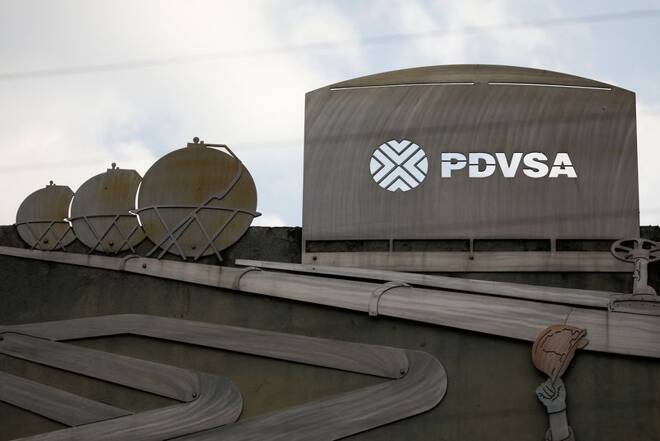Advertisement
Advertisement
U.S.-sanctioned oil tanker stuck in Indonesia carries Venezuelan fuel
By:
By Marianna Parraga HOUSTON (Reuters) - A grounded oil supertanker under U.S. Treasury Department sanctions being refloated in Indonesia is filled with Venezuelan fuel, according to vessel monitoring services.
By Marianna Parraga
HOUSTON (Reuters) -A grounded oil supertanker under U.S. Treasury Department sanctions being refloated in Indonesia is filled with Venezuelan fuel, according to vessel monitoring services.
Treasury’s Office of Foreign Assets Control last week imposed sanctions on the stranded tanker, Young Yong, for its part in an international oil smuggling network that Washington said supports Hezbollah and Iran’s Quds Force.
Last month, the Djibouti-flagged Young Yong received cargoes through ship-to-ship operations from U.S.-blacklisted tanker Silvia I and from the Eagle Brenda before becoming marooned off Indonesia’s Riau Islands, according to research by non-government organization United Against Nuclear Iran (UANI).
Both tankers had departed between late July and early August carrying fuel oil supplied by Venezuela’s state-run oil firm PDVSA, according to internal company documents seen by Reuters and TankerTrackers.com, which confirmed the vessels’ identities.
The Iran-flagged Silvia I, owned by state firm National Iranian Tanker Company (NITC), carried about 1 million barrels of fuel oil chartered by Iran’s Naftiran Intertrade Company as payment for Iranian crude imported by PDVSA this year.
The Panama-flagged Eagle Brenda, identified on PDVSA shipping schedules as “Eagle I,” also carried some 1 million barrels of Venezuelan fuel oil, the documents showed. By reviewing satellite photos, TankerTrackers.com spotted the ship receiving the fuel in Venezuelan waters between March and April.
The sanctions on the Young Yong and its owner, Hong Kong-based Technology Bright International, led to the loss of its Djibouti Maritime Authority flag last week and the cancellation of a classification by the American Bureau of Shipping that certified it was seaworthy, according to communications provided by UANI.
The U.S. embassy in Singapore said on Wednesday the United States has allowed some transactions in efforts to free the supertanker, which ran aground last month in the Singapore Strait near a key gas line.
The Young Yong was blacklisted by Washington along with tankers Adisa, B Luminosa, Bluefins, Boceanica, Bueno, Julia A, Lara I, Nolan, Rain Drop and Zephyr, most of which have recently been in Venezuela, according to documents and shipping data.
“The individuals running this illicit network use a web of shell companies and fraudulent tactics including document falsification,” said the U.S. Under Secretary for Terrorism and Financial Intelligence, Brian Nelson, in a release last week.
The Treasury Department did not immediately reply to a request for details.
PDVSA, Venezuela’s oil ministry, Iran’s oil ministry, NITC and India-based Sygnius Ship Management, which according to shipping databases bought the Eagle Brenda last year, did not immediately reply to requests for comment. Technology Bright International could not be reached for comment.
Carrying Venezuelan-origin cargoes is not new for the Young Yong. The tanker was in Venezuelan waters at least twice since last year, where it loaded Venezuelan crude and fuel for exports, according to PDVSA’s schedules and TankerTrackers.com.
(Reporting by Marianna Parraga in Houston; Additional reporting by Timothy Gardner in Washington and Bozorgmehr Sharafedin in London; Editing by David Gregorio)
About the Author
Reuterscontributor
Reuters, the news and media division of Thomson Reuters, is the world’s largest international multimedia news provider reaching more than one billion people every day. Reuters provides trusted business, financial, national, and international news to professionals via Thomson Reuters desktops, the world's media organizations, and directly to consumers at Reuters.com and via Reuters TV. Learn more about Thomson Reuters products:
Did you find this article useful?
Latest news and analysis
Advertisement
